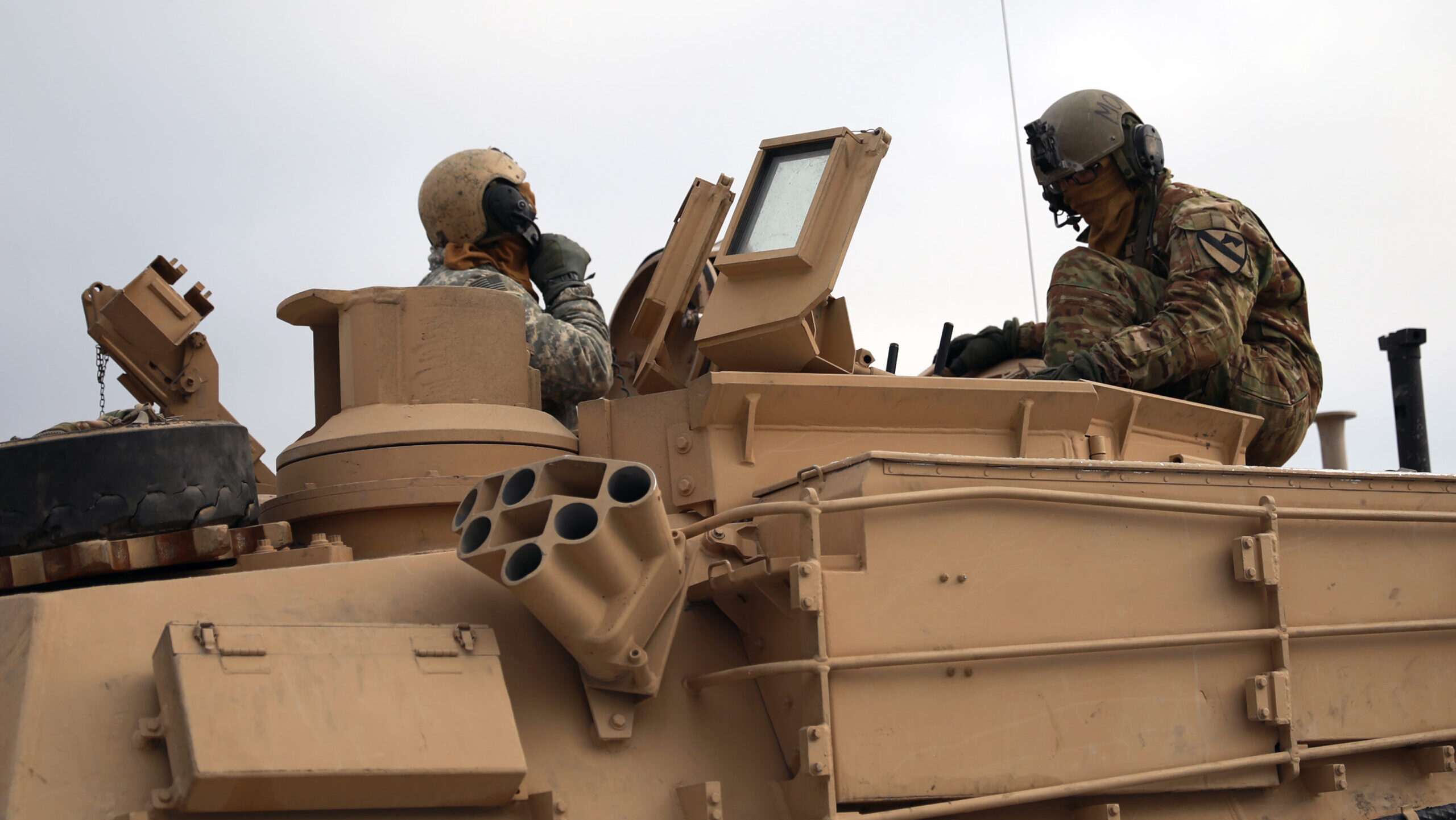TIM MARTIN

BELFAST — At first glance the Monday announcement from Ukrainian President Volodymyr Zelenskyy that the first US M1 Abrams main battle tanks have arrived in Ukraine ahead of schedule looks to offer much needed firepower for Kyiv to spur on a slow-moving counteroffensive.
But two defense analysts told Breaking Defense that while the arrival of the Abrams is surely a welcome sign to Kyiv and could help consolidate some gains, they alone are unlikely to significantly alter the strategic landscape any time soon compared to other main battle tanks already in service, including the German-made Leopard 2 and the British-made Challenger 2s. The Abrams also likely won’t have as much of an effect on the current fight as long-range fires and air defense, according to one of the analysts — at least until there’s a breakthrough in the Russian lines.
Abrams deliveries to Ukraine are “far more significant psychologically than perhaps physically,” said Hamish de Bretton-Gordon, former commander of the British Royal Tank Regiment.
He stressed that the tanks have arrived at a “really pivotal moment” where Russia’s position in Crimea “is becoming less tenable by the day” and pointed to events in Sevastopol, including Russia’s Black Sea fleet suffering submarine and ship losses and claims by Ukraine special forces that 34 Russian naval leaders and officers have been killed, all of which amounts to “very encouraging signs” in terms of progress toward a Ukrainian victory.
“The fact that Putin said to [Russian defense minister Sergei] Shoigu at the weekend, he’s got four weeks to stop the counteroffensive, one just feels that the deck of cards are beginning to crumble,” added de Bretton-Gordon.
Yohann Michel, research analyst for defense and military analysis at IISS, said the Abrams should allow some Ukrainian “positions” to be reinforced and equates to a “reconstitution of forces,” but he criticized the indecision that delayed the delivery of Western tanks to Kyiv all at once, which could’ve had more of an impact.
He said that the Western tanks, including the Abrams, should not be seen as a “game changer” because the most important issue is US and European industry outpacing Russian weapons production. Materiel like armored personnel carriers, air defense systems and 155mm ammunition should be prioritized, he said.
“Ukraine has a lot of difficulties at the moment because they don’t have air superiority and when you try to cross [or defeat] a heavily fortified position without air superiority it is painful and costly,” he explained.
Still, de Bretton-Gordon said the Western tanks could help consolidate gains following the breach of Russia’s first defensive line in Zaporizhia by Ukranian forces in early September, as long as Ukrainian forces are aided by long-range missiles.
The tanks’ value should become more clear, he said, if there’s a larger breakthrough in the lines. The Western tanks have superior mobility, firepower and protection, especially compared to Russian tanks because crews are able to survive enemy strikes, repair their vehicles in a matter of months and return them to the field.
“Once they’re [Ukrainian forces] through this defensive line, there’s nothing else really between them and the Kerch Bridge (Crimean Bridge),” he added, forecasting that control of the bridge would represent the most decisive moment in the war so far.
Zelensky did not share how many Abrams have arrived in Ukraine, but the US has committed to supply 31 vehicles. The Office of the Secretary of Defense has said the deliveries are a “first batch.” The US has simultaneously set up training for Ukrainian tank crews in Germany.
Ukraine is likely to be careful about how they use the Abrams, a senior Ukranian official told The Drive.
Kyrylo Budanov, head of Ukrainian military intelligence, said the tanks “should be used in a very tailored way for very specific, well-crafted operations because if they are used at the front line and just in a combined arms fight, they will not live very long on the battlefield. They need to be used in those breakthrough operations, but very well-prepared.”
Originally designed for US reservists, the tanks are easy to use, especially helpful for Ukrainian forces with limited training time, said Bretton-Gordon, with operators requiring an understanding of a “couple of buttons” to fire the vehicle’s 120mm main gun and take command of a steering wheel. The US has sold the tank to Australia, Egypt, Iraq, Morocco, Kuwait and Saudi Arabia, according to the US Army acquisition support center.
No comments:
Post a Comment